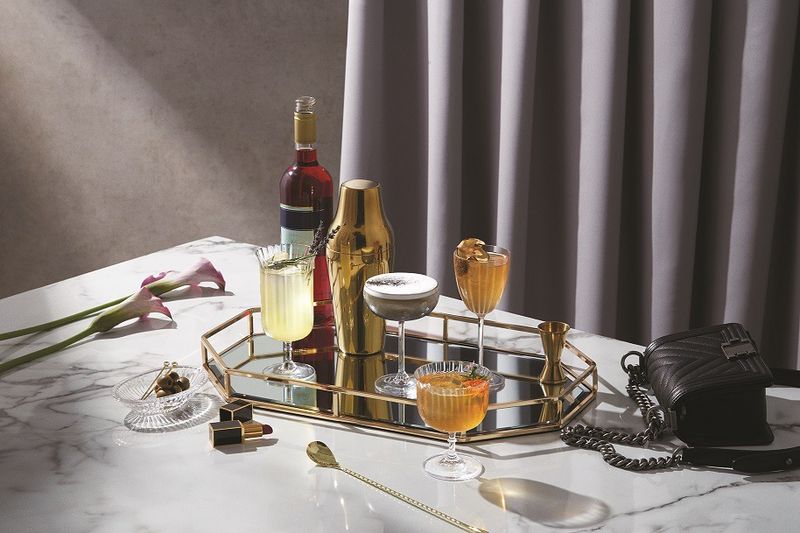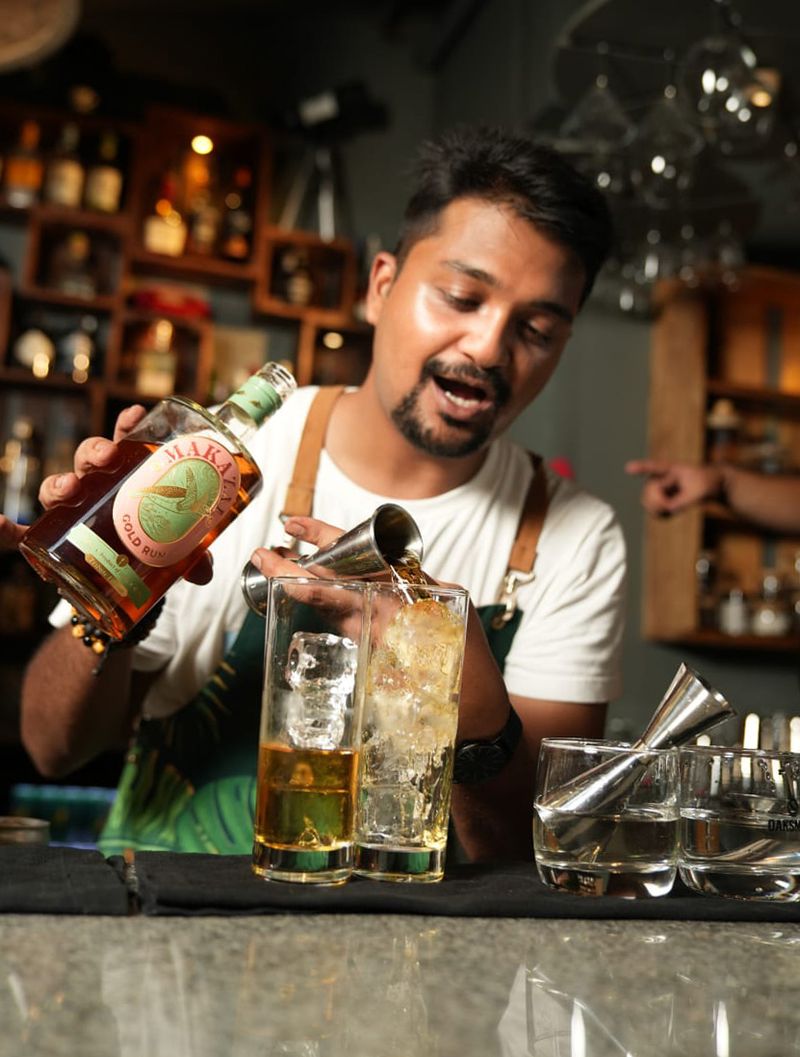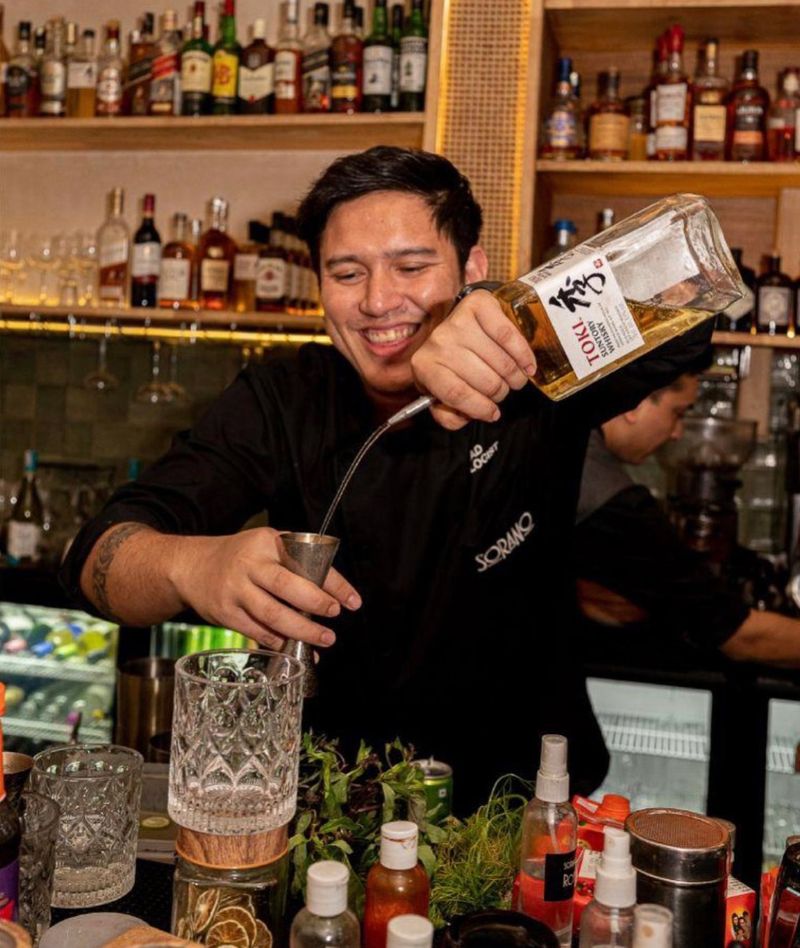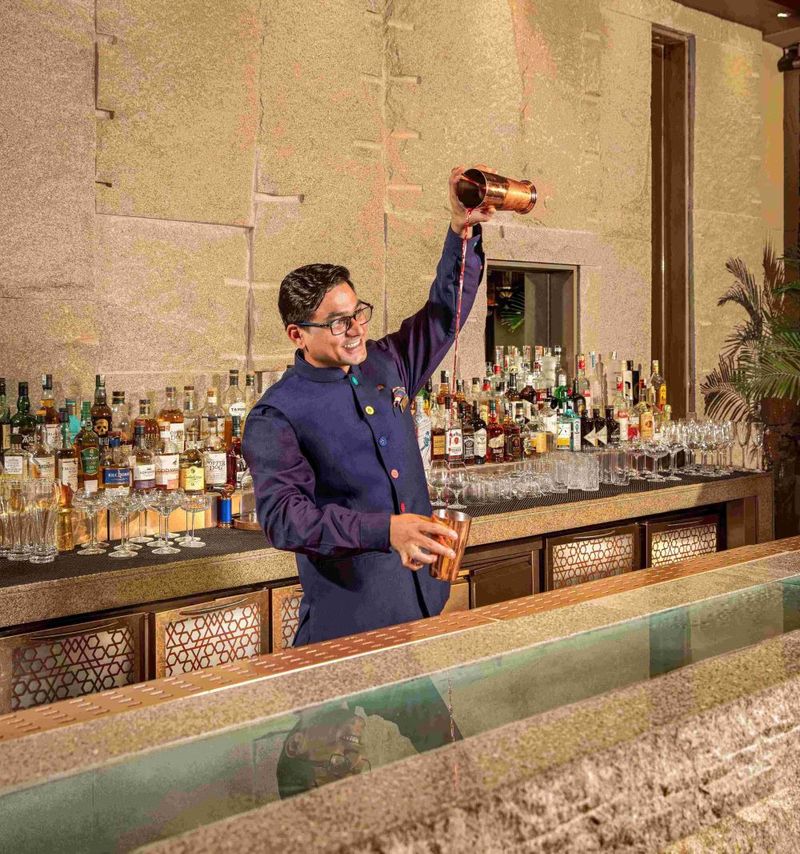In the 2016-SciFi movie ‘Passengers’, Jim (Chris Pratt) and Arthur (Michael Sheen) have this most profound conversation by the bar, in space, where Sheen, the android bartender, is polishing a glass. Pratt asks him, “I’m your only customer. Why are you always polishing a glass?” Sheen tells him, “Trick of the trade. Makes a person nervous when a bartender just stands there.”
And while that’s not quite the job of the glass, Sheen wasn’t too far from the truth. In fact, bartenders across the world often fuss over their glassware when not busy, and can get quite territorial. After all, a drink is rarely right if not served right.

In a glass of its own
As the F&B community celebrates World Bartender Day on February 24, we take a look at… no, not cocktails, not a bartender’s favourite food or spirit or travel destination, but about their favourite glasses and why it’s so important to have the ‘perfect’ one. The glittering world of glasses is fascinating; the way it’s meant to be held, swirled, if at all, if it’s a nosing glass or for a straight drink, or will there be an elaborate cocktail nestled within its walls – the anatomy of a glass is crucial.

Jonas Vittur, manager for the award-winning bar, Copitas at Four Seasons Hotel Bengaluru, says that choosing the perfect glass for a cocktail is an art and has to blend aesthetics and practicality. “Each glass I select enhances the visual appeal, playing a pivotal role in crafting a multisensory experience that elevates the overall drink experience. In the world of ‘glassology’, the choice of glassware goes beyond mere utility; they are the silent orchestrator of the experience,” he says. Vittur’s two favourite glasses are the Wormwood Astoria by Giancarlo Mancio and the Tornqvist Cup by Anna Badur.
For Santosh Kukreti, the head mixologist for Slink & Bardot, Mumbai, when it comes to making cocktails, it’s the chosen spirit, the kind of ingredients that are going to go into the drink — if it has anything fizzy in it or not — would define the kind of glass that’s chosen for it. “Presentation of course is also a key factor and garnish plays an important role. Herb garnishes have great aromas and they evolve out best when garnished correctly ideally in a glass such as a goblet. Spirit-forward cocktails without ice can be served chilled in Martini glasses of a Nick & Nora, which relatively has less capacity, and also has a stem for people to hold so that the drink does not get warm by our hands,” he says.
Kukreti’s favourite styles of glasses are the Nick & Nora and the Japanese-style Old Fashioned Glass.
Style does matter…
The overall experience of sipping or chugging or just relishing a drink does depend on the glass it comes in. Ask a good bartender and they’ll tell you just that. “For example, a tall, slender highball glass can showcase the layers of a mojito or a gin and tonic, while a wide-rimmed margarita glass can highlight the vibrant colours of the cocktail,” says Virender Singh, beverage head of the Delhi-based bar, RED. Singh favours the Nude Highball, the Nude Old Fashioned glass and the Coupe Glass the most.

Sujan Shetty, the beverage manager for Slow Tide in Goa, also favours the Coupe. In fact, the Coupe has a lot of takers. But the Highball and Tiki Mug are on his list too. “They're equally stunning and utilitarian, perfect for classic cocktails, and perfectly complement a cocktail. For instance, the Tiki Mug gives a drinker a playful, story-based drinking experience, as well as a reminder of the full universe of cocktail culture,” he says.
Glassware is to a bartender what new phones are to geeks who are constantly looking to upgrade, find the good stuff. Ask a glassmaker, and they’ll tell you. “With the increasing popularity of cocktails, bartenders are constantly seeking new ways to elevate the experience for their guests. And it’s true, a perfect drink deserves the perfect vessel. As a manufacturer, we offer a blank canvas for their creativity to shine through our RIMS collection. Its versatile forms and precise rim shapes allow bartenders to experiment with flavours, aromas, and textures, while the high-quality crystal ensures both durability and a luxurious feel, making every sip a delight, says Nutchavinee Nikhomchaiprasert, executive director for marketing, Ocean Glass Company Ltd which owns the brand, Lucaris.
Shetty, who’s constantly playing with drinks at Slow Tide, also goes on to add how a glass can manipulate taste buds. A flute, for example, contains scents while directing a drink to the middle of the tongue, thus solidifying a sparkling wine's crispness, showcasing how a glass's shape can change flavour perception in the most nuanced of manners.
…as does the shape
Now when it comes to wine glasses, there is some serious snobbery going on. But is it really in vain or does the glass truly matter? Sure it does. You wouldn’t drink a Malbec from a flute, would you? Or would you? The choice of glassware significantly influences the wine-tasting experience, creating a delicate interplay between aesthetics and functionality, says Prateek Gupta, CEO of Café Dali, New Delhi.
“A well-designed wine glass enhances the sensory journey by allowing the wine to breathe and release its full bouquet. The shape of the glass, whether wide for reds or narrow for whites, directs the flow of aromas, contributing to a nuanced olfactory exploration. The act of swirling the wine within the glass not only imparts aeration but also showcases the wine’s viscosity through the elegant trails of legs,” he explains.

Wine sommelier and columnist, Magandeep Singh says that the shape of a glass, first and foremost, affects one’s visual perception (and consequently, appreciation) of a drink. Singh, who’s also the brand influencer for Lucaris, says, “I personally love the fluted ones, which refract light in a very special way. So, if you have a pretty glass, the drink you will serve in it already seems appealing. All one needs to do then is have a solid recipe at hand, execute it well, and garnish it right,” he says, adding that with good quality glasses in lead-free crystal retain their sheen even after a few hundred washes.

Abhirup Bhattacharya, mixologist and brand ambassador for Maka Zai Rum pretty much reiterates the same thought, and says that there are a variety of reasons behind choosing the right glass for the right drink. "The shape of the glass can affect how intensely a cocktail’s aroma hits your nose. Any drink that gets topped up with aeration or bubbles requires a higher volume glassware in the form of a Highball. Tradition also plays a role when serving classic drinks - for example, a classic martini in the V-shaped martini glass, a Mint Julep in a Julep cup, a Moscow Mule in a copper mug, or a punch in punch bowls. Coupes, martini glasses, or any short-stemmed glasses made from high quality crystal are ideally kept in the fridge in order to maintain a uniform temperature - right from making the drink to serving it. This helps keep the cocktail’s flavours intact for longer, a factor that particularly matters when the drink is served without any ice.”

Talking about ice, Manoj Singh Rawat, head mixologist at Manifest Hospitality that owns the Kolkata-based Sorano and Mehico, breaks down glassware choices to four different factors, and one of them is whether the drink will be served with ice or not. “Tall glasses provide enough room for ice cubes and mixers while allowing the drink to maintain its cool temperature. Conversely, drinks served without ice, such as stirred cocktails like a Manhattan or a Negroni, are typically presented in rocks glasses or coupe glasses to highlight the drink’s flavours and aromas without dilution,” he says.
Both Krishnendra Duddupudi and Dhiraj Kumar Bhagat, asst F&B managers of Novotel Visakhapatnam Varun Beach and Jaisalmer Marriott Resort and Spa respectively, say that a variety of glasses are specifically crafted to optimise the drinking experience for different cocktails. “For instance, wide-mouthed glasses, such as rocks or old-fashioned glasses, are perfect for cocktails that are meant to be sipped slowly and enjoyed, like a whiskey sour or an Old-Fashioned. The wide mouth allows the drinker to fully experience the aroma of the drink before taking a sip, enhancing the overall taste and experience,” says Duddupudi. Both Bhagat and him are fans of the Martini glass.
“Glasses with narrower openings concentrate aromas, thereby enriching the olfactory experience. This is why beverages like wine and brandy are traditionally served in glasses with tapered rims, allowing the fragrance to be captured and savored with each sip. Consequently, the shape and size of glassware also contribute to the nuances of taste experienced,” Bhagat adds.
Feel the experience
Your glassware will also have a lot to do with the ambience of the bar, avers Avinash Kapoli, partner at the Bengaluru-based SOKA. “I definitely look at the setting of the table when I decide on the glassware, and of course the style of the drink, if it’s a Highball, a short drink or a classic,” he says. Kapoli’s favourites are the Tiki glasses and the Old Fashioned.
In the art of mixology, where every nuance matters, the right glassware becomes a pivotal storyteller, enhancing the presentation, elevating aesthetics, and contributing to an immersive experience, says Dilbar Singh Rawat, head mixologist, Loya, Taj Palace, New Delhi. “When we created the new cocktail programme, S.P.I.C.E, inspired by music, we wanted to ensure that every glass used was unique, differentiated and synchronised well with the concept of every cocktail. Our selection encompasses an array of stemmed glasses, high-ball glasses, and uniquely designed old-fashioned glasses, among others. Each glass was carefully chosen, marrying form and function seamlessly,” he says.

And this fascination with glasses extends to beer as well. I mean it’s beer, how different can their glasses be, right? Biswajit Roy, the beverage manager at Geist Brewing Co, Bengaluru, explains how the size, the shape and the material of the glass can dramatically influence the aroma, flavour, and carbonation of the beer, enhancing its overall profile. “While we initially served different styles in corresponding glassware (e.g the Kamacitra in a tulip glass), we recently moved over to using a single glassware style that we feel showcases the beer's best qualities, engages the senses and makes each sip more enjoyable across multiple styles.” Roy too fancies the Coupe, the Old Fashioned and the Nick & Nora.
In today’s cocktail culture, there’s a growing emphasis on using trendsetting and unique glassware to elevate the presentation of drinks. Bartenders and mixologists are experimenting with unconventional shapes, artisanal designs, and custom-made vessels to create visually stunning cocktails that capture the imagination of customers. “Whether it’s a geometric-shaped glass, a vintage-inspired coupe, or a custom-designed Tiki mug, unique glassware adds an extra layer of creativity and excitement to the drinking experience,” Rawat adds.


_1708679414743_thumb_1200.jpeg?w=3840&q=75)